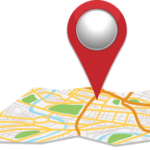Request an Appointment
Please call our office at 816-363-2500 to make an appointment. Don’t forget to bring your imaging studies with you.
What is Adult Idiopathic Scoliosis?
Although scoliosis is often associated with childhood, it can occur in adults of any age. The term adult refers to patients who have completed their growth (i.e., they are skeletally mature). Adult scoliosis is distinctive in terms of the causes, treatment types and the goals of treatment.
Scoliosis is a musculoskeletal disorder that adversely affects the shape of the spine (backbone). A scoliotic spine (when viewed from behind) will not be straight and may instead look like the letter “C” or “S”, due to the side-to-side (right-to-left) curvature.
Causes of Adult Idiopathic Scoliosis
Idiopathic scoliosis is a common type of adult scoliosis. Idiopathic simply means of unknown origin; therefore, idiopathic scoliosis means that the exact cause of scoliosis is not known (i.e., there is no clear cause). Adult idiopathic scoliosis may be the result of the progression (worsening) of childhood idiopathic scoliosis.
The percentage of adults affected by idiopathic scoliosis is unknown. However, it is frequently reported that between 8-9% of adults (25–75 years of age) have scoliosis. An abnormal curvature of the spine can occur at any age but chances increase with age. Scoliosis affects women more than men. Regardless of the incidence rate, only a fraction of adult scoliosis patients develop abnormal curves large enough to require active treatment.
Incidence Rate
The percentage of adults affected by idiopathic scoliosis is unknown. However, it is frequently reported that between 8-9% of adults (25–75 years of age) have scoliosis. An abnormal curvature of the spine can occur at any age but chances increase with age. Scoliosis affects women more than men. Regardless of the incidence rate, only a fraction of adult scoliosis patients develop abnormal curves large enough to require active treatment.
Symptoms of Adult Idiopathic Scoliosis
Most individuals with adult idiopathic scoliosis will experience pain; in fact, it is typically discovered due to pain.
Potential signs and symptoms can include:
- Low back pain or backache
- Uneven hips and/or shoulders (one is higher than the other)
- One shoulder blade sticks out more than the other
- Appearance of a hump on the back
- Spine curves to one side
- Muscle fatigue
- Pain and numbness that shoots down the legs
Diagnosis of Adult Idiopathic Scoliosis
The following are used to evaluate patients for adult scoliosis:
- Medical History and Physical Examination: This includes an interview with a doctor and a review of the patient’s medical records. These are done in order to determine the presence any medical conditions that may be causing the scoliotic curvature.
- Imaging Studies: Adult patients with abnormal spinal curves, unusual back pain, or signs of underlying medical conditions will need imaging studies. These may include X-rays, CT scans, or an MRI of the spine, as well as the pelvis and hips.
Treatment Options for Adult Idiopathic Scoliosis
Many adult patients with mild idiopathic curves do not need treatment. However, they should be monitored on a regular basis. Adult scoliosis treatment involves both surgical and non-surgical options. Treatment focuses on pain reduction, functional improvement and correcting the abnormal curvature of the spine.
Treatment of adult scoliosis depends on:
- Severity of symptoms
- Severity of the scoliotic curve
- Patient’s overall/general health
- Location of the curve

 The Highest Quality of Neurosurgical Care
The Highest Quality of Neurosurgical Care